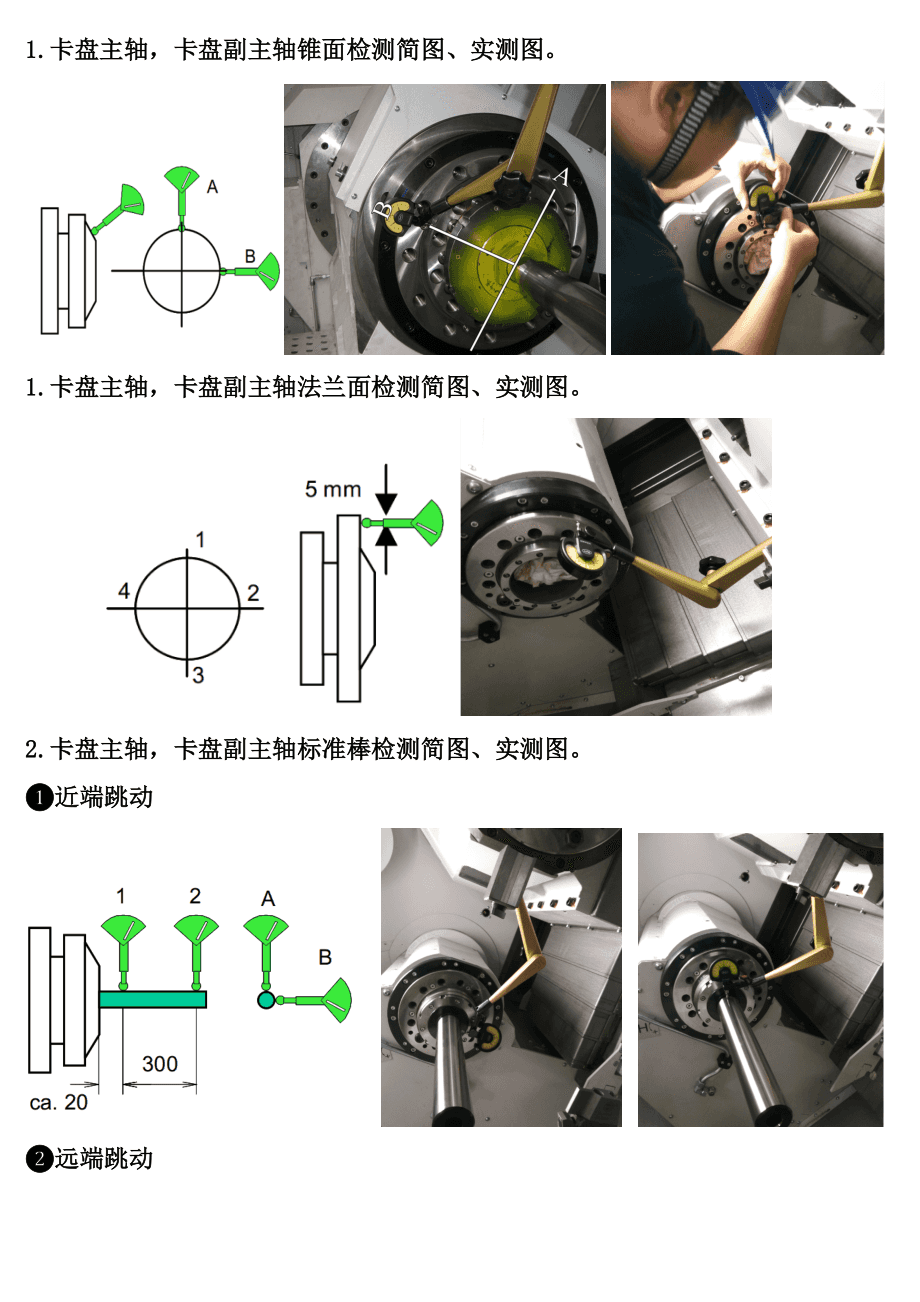The Silent Killer of Precision: How Spindle Runout Destroys Machining Accuracy – And How to Stop It
In the high-stakes world of precision manufacturing, a mere 0.01 mm deviation can transform a meticulously crafted component into scrap metal. This invisible enemy? Spindle runout – a microscopic instability in the beating heart of your machine tool. As veteran workshop masters know: "The spindle is the machine’s heart." Its rhythmic pulse dictates the lifeblood of precision. When this pulse falters, even momentarily, the results are catastrophic.
When the Heartbeat Staggers: The Three Faces of Spindle Runout
Imagine expecting the Earth’s perfect rotation – but witnessing a drunken stumble instead. That’s a spindle under runout stress. This destructive instability manifests in three forms:
- Radial Runout (Eccentric Wobble): The spindle axis shifts erratically within a radial plane, like a wheel slightly off-center.
- Axial Float (Endplay Surge): The spindle moves unpredictably back and forth along its central axis.
- Angular Wobble (Tilted Axis): The entire spindle axis misaligns at an angle relative to its ideal position.
The Tolerance Nightmare: National standards (like GB/T) dictate severe limits. For a standard lathe spindle:
- Radial runout at the spindle nose: ≤ 0.01 mm (roughly 1/7th a human hair!)
- Axial runout measured 300mm from the nose: ≤ 0.02 mm.
The Domino Effect: How Microscopic Runout Crushes Precision
Runout doesn’t just exist – it cascades through the machining process, distorting geometry with ruthless efficiency.
-
In Turning (Workpiece Rotating):
- Radial Runout: Creates uneven cutting depth around the circumference. While final diameter appearance may be acceptable (due to rotation averaging), out-of-roundness becomes the hidden defect.
- Axial Float: Induces a "spiral" effect on faced surfaces, causing poor flatness. Threads exhibit dreaded periodic pitch error.
- Angular Wobble: Morphs intended cylinders into tapered cones or creates convex/concave distortions on faces.
- In Boring (Tool Rotating):
- Radial Runout: Forces the boring tool tip onto an elliptical path, machining holes into dreaded ovals (ovality) – catastrophic for bearing fits or cylinder bores.
- Angular Wobble: Shifts the finished hole’s axis relative to the machine reference, destroying positional accuracy and coaxiality.
Real-World Carnage: Consider an automotive parts supplier: 0.015 mm of radial spindle runout led to connecting rod bores failing ovality specs. The result? Mandatory rework of an entire production lot – costing over ¥1,000,000.
Hunting the Culprit: The Bearing’s Hidden Secrets
The root of spindle instability almost invariably lies within its bearings:
-
Plain Bearings (Sliding):
- For turning: Form errors in the journal surface deform the oil film, directly impacting runout under cutting loads.
- For boring: Variations in bearing clearance groove geometry cause shifts as load direction reverses, amplifying error.
- Rolling Bearings (Ball/Roller):
Any imperfection becomes amplified:- Raceway misalignment
- Roller/ball diameter variations
- Geometrical errors in inner/outer ring mounting surfaces
- Crucially, excessive clearance is precision’s archenemy – turning micro-chatter into measurable runout.
Winning the Tolerance War: Proven Solutions to Slay Runout
Combating spindle runout demands a multi-pronged offensive:
-
Control the Source: Secure the Foundation
- Specify ultra-high precision bearings (Classes P4A, P2, or ABEC 9/ABEC 7P). Compromising here is false economy.
- Machine spindle journals to < 0.002 mm roundness & cylindricity. No bearing compensates for a poorly ground seat.
- Finish bearing bores in the housing using precision boring heads or fitted diamond honing tools – this interface is critical.
-
Revolutionize Assembly: Process is Paramount
- Eliminate bearing internal clearance using hydraulic preload systems – creating a rigid, but controlled, stiffness.
- Utilize cryogenic mounting techniques where bearings are shrink-fitted for consistent preload without the stress of thermal expansion mismatches.
- Perform high-speed dynamic balancing (G0.4 spec or better) of the entire assembled spindle – static balance isn’t enough at operational RPMs.
- Master Machining Strategy: Mitigate What Remains
- Employ boring bars with integrated pilot bearings restricting deflection – achieving ±0.05 mm positional accuracy on deep holes.
- Use machined features (pre-bored holes/datum surfaces) as auxiliary support points for the workpiece or tooling – enhance rigidity radically.
- Implement thermal stabilization protocols: Run spindles at operating speed for 30+ minutes before critical cuts to stabilize expansion.
Proof in Precision: The Aerospace Improvement Spiral
One leading aerospace manufacturer implemented a "Tolerance Warfare Program" targeting spindle integrity:
- Achieved spindle runout reduction from 0.012 mm to just 0.005 mm through P2 bearings and cryo-assembly.
- Adopted dual-pilot boring bars for machining mission-critical fuel injector nozzle bores.
- Achieved guaranteed coaxiality better than 0.015 mm on complex multi-stage components.
The ROI was undeniable: 37% increase in first-pass yield and annual savings exceeding ¥10 million.
The Unending Battle: Precision as Competitive Lifeline
Precision manufacturing is fundamentally a war waged against errors measured in microns. Each rotation of the spindle must mimic the unwavering regularity of a chronometer. When runout is conquered, surfaces gleam within spec, fits are perfect, and assemblies function flawlessly. In this high-precision arena, the mastery of motions smaller than a grain of pollen determines which companies dominate and which become obsolete.
Precision Challenge: You detect a spindle with 0.008 mm radial runout at its nose and 0.018 mm axial runout. Is it suitable for machining IT7 grade precision parts? Consult GB/T 4020! (Hint: The answer requires comparing values to tolerance classes – often IT7 demands runout below 0.005-0.01 mm. This tells you the spindle fails).

















